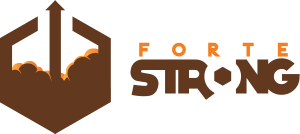 In continuing to discover reasons as to why failure to launch occurs in young men, we come to our first conclusion: teaching methods. Dr. Leonard Sax, author of the book Boys Adrift mentions this large learning discrepancy between boys and girls. He mentions that most of the typical teaching methods found in today’s schools, favor girls. If you are a parent of both a boy and a girl, you will know the drastic difference between the two sexes. Girls are much more likely to sit still, theorize and discuss topics, read, memorize, write well and respond to direction. Conversely, boys need movement and the ability to learn hands on.
In continuing to discover reasons as to why failure to launch occurs in young men, we come to our first conclusion: teaching methods. Dr. Leonard Sax, author of the book Boys Adrift mentions this large learning discrepancy between boys and girls. He mentions that most of the typical teaching methods found in today’s schools, favor girls. If you are a parent of both a boy and a girl, you will know the drastic difference between the two sexes. Girls are much more likely to sit still, theorize and discuss topics, read, memorize, write well and respond to direction. Conversely, boys need movement and the ability to learn hands on.
Teaching Methods: Learning from experience
In other words, boys need to learn from experience just as much, if not more so, than theoretical classroom application. That’s why boys in college tend to get better grades on their labs when compared to their classroom grades. From the book Boys and Girls Learn Differently: A Guide for Teachers and Parents we learn that,
Girls, for instance, use words and talking aloud to help them think and they enjoy problem-solving in a group where everyone is equal; while boys are typically better at decoding abstract symbols and tend to work silently. So collaborative learning which has become common in classrooms at every level, may not give boys the best opportunity to demonstrate their knowledge. In contrast, boys thrive on challenge and competition, but many teachers avoid competition, fearing that some children will suffer a loss of self-esteem. Without it, however, we lose a powerful vehicle for keeping boys engaged in their learning.
Teaching Methods: A more balanced approach
 The bottom line is similar to this. Ideas about how to effectively teach boys/young men need to change from what society has deemed to be the easiest way to teach. European schools use a healthy balance of both classroom and hands on teaching approaches to cater to both learning styles. Our young men often discover that what they once thought was a learning disability was merely a different learning style. At Forte Strong, we keep our young men engaged in learning through experiential education, or learning by doing. We practice what we preach and give our students as much learning opportunities as possible, through jobs, internships, certifications, job shadowing, service, travel, community projects, and much, much more. So whether our boys want to become a doctor, get their scuba certification, or take a dining etiquette course, we give them the opportunities to keep them engaged, using effective teaching methods utilizing an approach that works.
The bottom line is similar to this. Ideas about how to effectively teach boys/young men need to change from what society has deemed to be the easiest way to teach. European schools use a healthy balance of both classroom and hands on teaching approaches to cater to both learning styles. Our young men often discover that what they once thought was a learning disability was merely a different learning style. At Forte Strong, we keep our young men engaged in learning through experiential education, or learning by doing. We practice what we preach and give our students as much learning opportunities as possible, through jobs, internships, certifications, job shadowing, service, travel, community projects, and much, much more. So whether our boys want to become a doctor, get their scuba certification, or take a dining etiquette course, we give them the opportunities to keep them engaged, using effective teaching methods utilizing an approach that works.
Best,
The Forte Strong Family
About The Author
Brook Price dedicated himself to helping others early in his life. He grew up in Sunny Orange County California, then joined the Marine Corps at the age of 21 serving five and half years as a helicopter crew chief and then as chief accountant. His journey with this type of work began when he volunteered as a Young Marines Instructor during his time in the Marines, helping kids get off the street, improve their lives and develop as a leader. After his tour Brook left the Marines to pursue a career in experiential therapy by attending Southern Utah University where he majored in outdoor recreation with a minor in psychology.
Brook has seventeen years experience working for a variety of different therapeutic and transitional programs across the nation. His thirst for knowledge drove him to learn and study successful therapeutic models and programs across the country, most notably Outward Bound. Brook has experience working with therapeutic, residential, military, wilderness and transitional programs for adults and adolescents.

